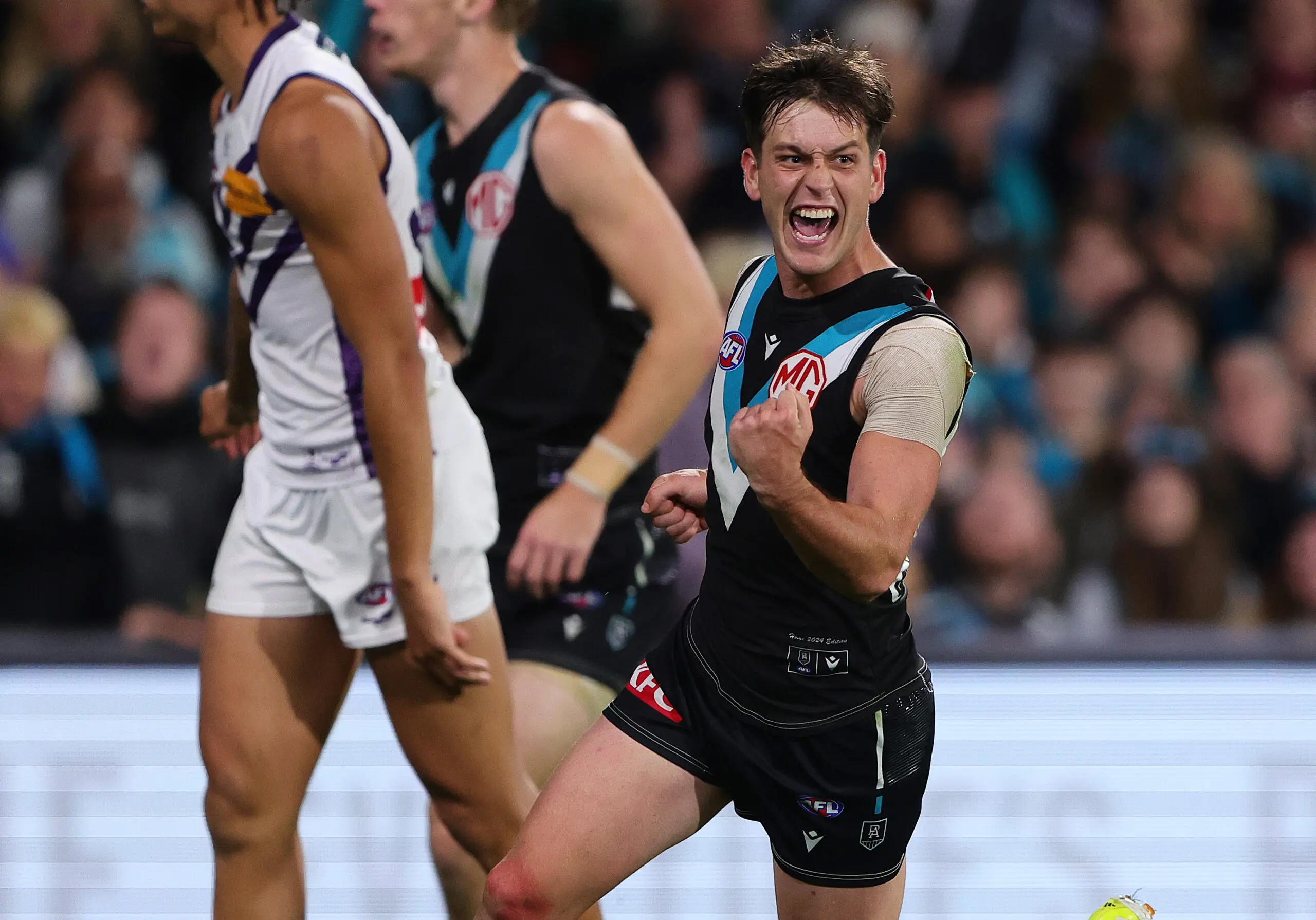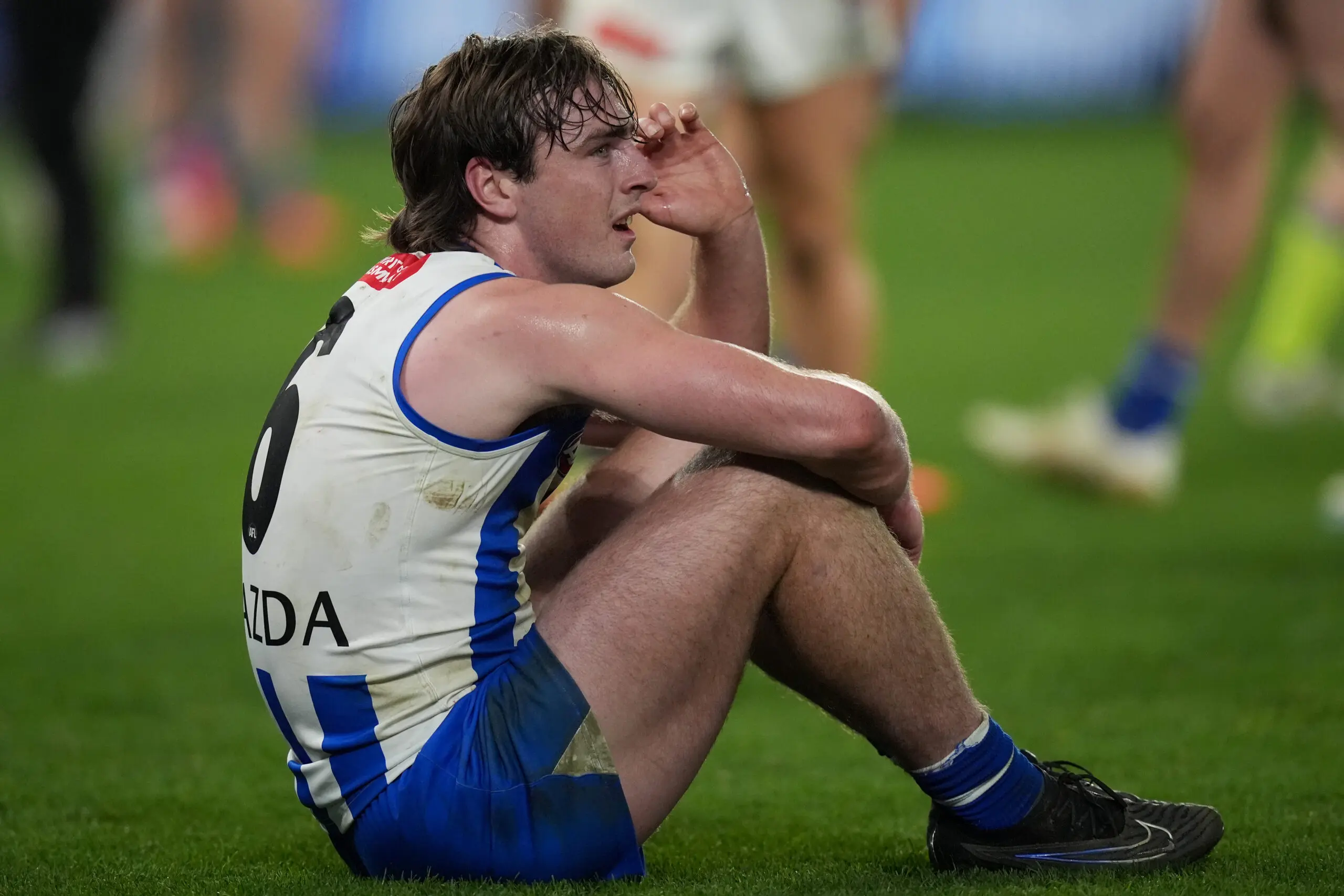The final bye round of the AFL season is upon us, with six matches to play out over the weekend. Two top-eight clashes headline what is a crucial week of football, with fifth to 12th separated by just four premiership points.
So, let's dive into what statistic your club should place its focus on to secure a win in Round 15.
Carlton vs Geelong - tackles
In a Friday night blockbuster, the Blues host an out-of-form Cats side at the MCG. This match is set up to be an intense contest, with both clubs jostling for top-four and top-eight positions. Geelong and Carlton are ranked second and fourth for tackles per game this year, averaging 64.8 and 63.9 respectively.
Tackling pressure has been vital for Geelong's success this season. In their last five matches, where they display a 1-4 record, the Cats have an overall tackle differential of -26 compared to their opposition.
In Carlton's latest loss against Sydney, they lost the tackle count by 22, highlighting how defensive pressure can disrupt the Blues' gameplan.
Looking back at the Round 7 matchup between the two sides earlier this year, the Cats out-tackled the Blues by only two in a nail-biting 13-point win. Another even tackle count could result in another close affair on Friday night.
Port Adelaide vs Brisbane - inside 50s
The Power have taken significant backward steps from their last five outings, averaging just 48.4 inside 50s per game, a decrease of 13.8 compared to their first five matches. Beginning the season as the highest-scoring side in the competition, Port Adelaide now sit ninth for goals per game.
The Power come up against an in-form Brisbane outfit, who have a record of 3-1-1 in their last five matches, including winning margins of 119, 43, and 20.
Brisbane average an AFL-best 57.5 inside 50s, with the likes of Lachie Neale and Hugh McCluggage averaging five and 4.8 each.
In their first 2023 clash, the Power won by 54 whilst recording 25 more inside 50s than Brisbane. However, in their 48-point qualifying final victory, the Lions won the inside 50 count by 16.
Evidently, inside 50s are the key for both sides securing a victory, indicating it will be crucial again on Saturday afternoon.

GWS vs Sydney - scores off turnover
The Swans ability to counterattack has been instrumental in their scoring prowess this year, rated number one for scores off turnover in the AFL. Half-backs Nick Blakey and Oliver Florent are able to slingshot the football from the Swans defensive half, creating one-on-one opportunities for their key forwards in Joel Amartey and Logan McDonald.
Sydney also rank number one for scores originating in the forward half, as their stacked midfield of Chad Warner, Errol Gulden and Isaac Heeney have been playing a class above.
A gritty win from the Giants against Port Adelaide last week has reignited their season after a poor patch of form, sitting just two points shy of a top-four position. With the intercepting ability of Sam Taylor and Jack Buckley, the Giants are ranked fifth for scores off turnover this year.
The Swans had nine more scoring shots than GWS in their Round 8 clash, through their counterattacking run-and-carry and defensive pressure. GWS will need to match the Swans pressure on Saturday if they are to create more scoring opportunities this time around.
Melbourne vs North Melbourne - clearances
In a first-half blitz of Collingwood, North Melbourne dominated the clearances before the Magpies came storming home. Luke Davies-Uniacke and George Wardlaw combined for 13 clearances and 14 inside 50s as the Kangaroos played with dash and dare.
A heartbreaking defeat followed, yet the Roos' first half presented an exciting brand of football which stemmed from the midfield.
Facing a depleted Melbourne outfit who will be without Christian Petracca for the remainder of the season, North Melbourne have a prime opportunity to bounce back from last week's nightmare.
North Melbourne average 36.7 clearances per game, but in their last two matches they have recorded 48 and 40. Melbourne average the second-worst clearance average in the AFL, with just 34.2 per game.
Clayton Oliver is recording his worst clearance average since his first AFL season, at 4.7 per game. Jack Viney too has had a slight decrease in output.
A determined North Melbourne side have the cavalry and capability to win the midfield battle this weekend, potentially causing a boilover at the MCG.

Essendon vs West Coast - goalkicking efficiency
Essendon's best statistic lies in inside 50s, where they are ranked third, averaging 56.5 per game. In their Round 8 fixture against West Coast, the Bombers had a +16 differential for inside 50s, recording 60-44.
However, a straight-kicking West Coast side gave Essendon a scare, with the Bombers surviving in a six-point win.
Essendon have been prone to wayward kicking this season, and it cost them wins against the Blues, where they scored 9.17 (71), and Gold Coast, where they scored 11.14 (80).
Despite West Coast's impressive effort in their previous encounter, the Eagles average the third-worst goalkicking efficiency in the AFL, at 21.1%. If the Eagles are to challenge the Bombers at their Marvel Stadium fortress, Jake Waterman, and likely returnee Oscar Allen, will need to be at their sharpshooting best.
Fremantle vs Gold Coast - intercept marks and marks inside 50
The battle between Fremantle's forward line and Gold Coast's backmen will be a curious watch on Sunday. Fremantle's breakout young gun Josh Treacy is averaging just over two marks inside 50 per game, as is Jye Amiss and Matt Taberner.
The Dockers' dynamic forward line comes up against the premier intercept-marking team in the league though, with the Suns averaging 18.8 per game. Sam Collins and Mac Andrew have been stalwarts in defence, averaging 3.1 and 3.3 intercept marks.
With Gold Coast sitting two points behind the eighth-placed Dockers, a strong intercept marking display will be key for not only a win, but securing a top-eight spot on the ladder.






























